How a Deadly Camping Trip Revealed an Arms Race Between Snakes and Newts
Snakes’ incredible resistance to newt poison started before either creature even existed.
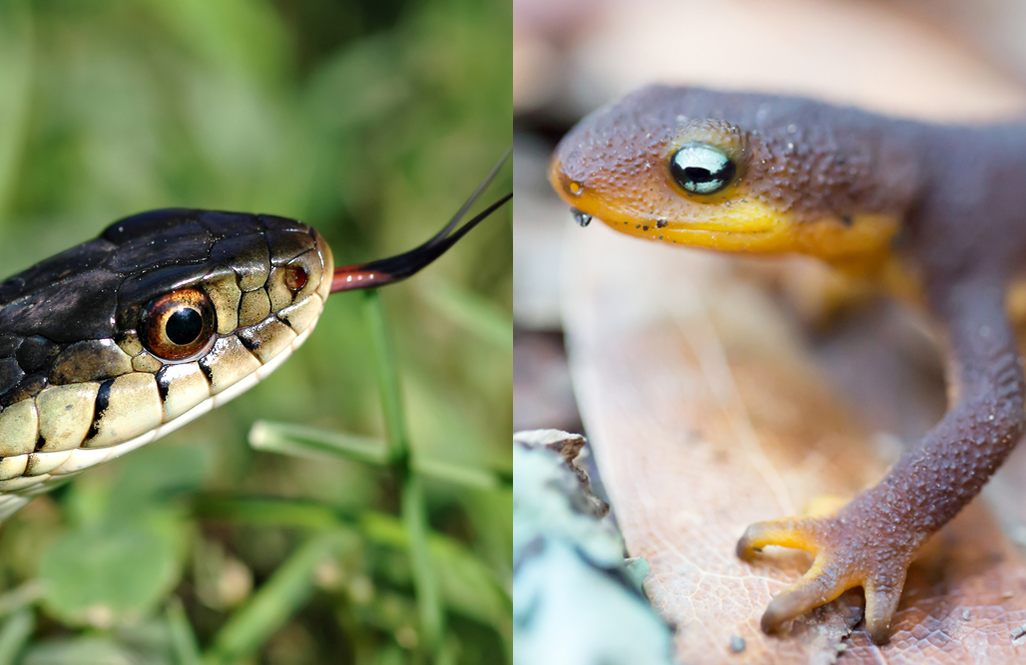
Left, a common garter snake and right, a rough-skinned newt. (Photos, from left: Sharon Day/shutterstock.com; Yuval Helfman/shutterstock.com)

On the West Coast, newts and snakes are locked in an arms race—a tit-for-tat battle of adaptations for better weapons in the former and stronger defenses in the latter. It’s a textbook example of coevolution, and it came to light because of an urban legend.
Three friends, the story goes, went hunting in the Oregon Coast Range one weekend and never came home. Police later found them dead at their campsite with no signs of violence or struggle. They also found a fourth body: a rough-skinned newt (Taricha granulosa) that had been accidentally boiled with the water used to make a pot of coffee.
Edmund “Butch” Brodie Jr. first heard about the mysterious deaths in the 1960s as an undergraduate at Western Oregon University. He’d gone to his biology professor looking for a research project to work on, and the professor told him the tale—which he’d heard growing up—and suggested Brodie look into whether or not the newts were poisonous.
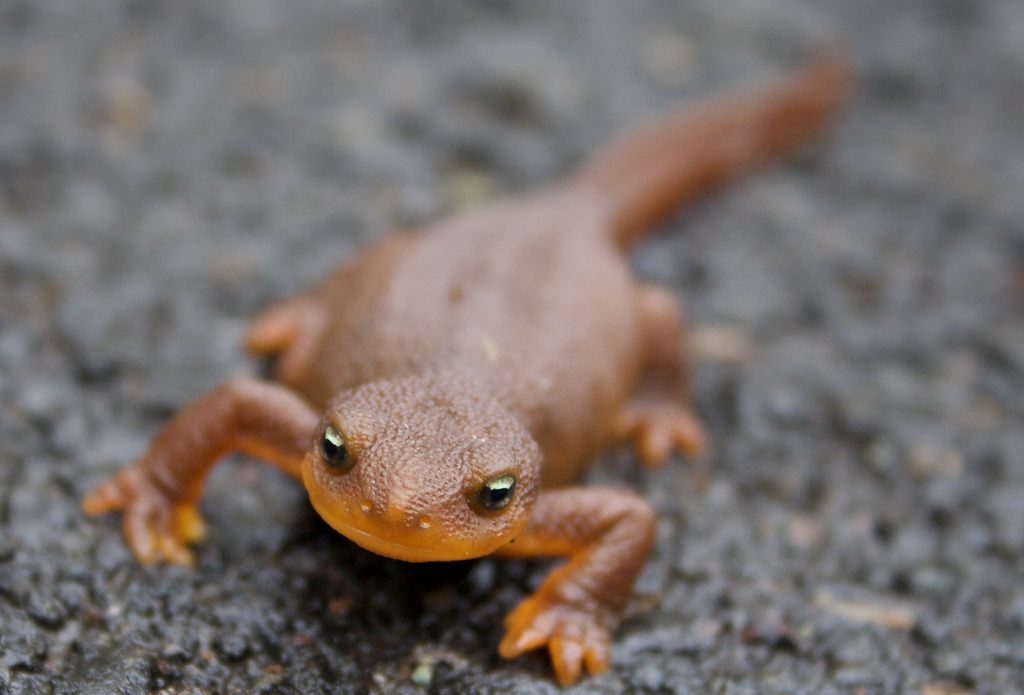
A rough-skinned newt in Oregon. (Photo: Elias Gayles/CC BY 2.0)
Brodie quickly showed that they were, and very much so. After trapping newts in buckets, he ground their skin with a mortar and pestle, mixed it with water, and injected or force-fed a variety of animals with different concentrations. His first subject, a house mouse, died in his hands before he could even put it back in its cage, and he found that even just a tiny amount of newt skin—0.0002 ml—could kill a mouse within minutes.
He tested more than two dozen species—reptiles, birds, amphibians, and mammals that were potential newt predators. All of them showed similar symptoms of poisoning, like muscular weakness, vomiting and paralysis. Most of them died, as well.
The poison at work, other scientists discovered, was tetrodotoxin, or TTX, a neurotoxin also found in pufferfish and familiar to some people as the poison that nearly did Homer Simpson in. It’s 1,000 times more toxic by weight than cyanide. Based on the doses that killed the other animals, if the newt in the coffee pot did indeed kill the hunters (which seemed almost obvious at this point) it had enough TTX in it to kill around 100 more. This led Brodie to another question: The newts’ largest natural predators are raccoons and coyotes, so why would they pack enough poison to kill a bigger animal 100 times over?
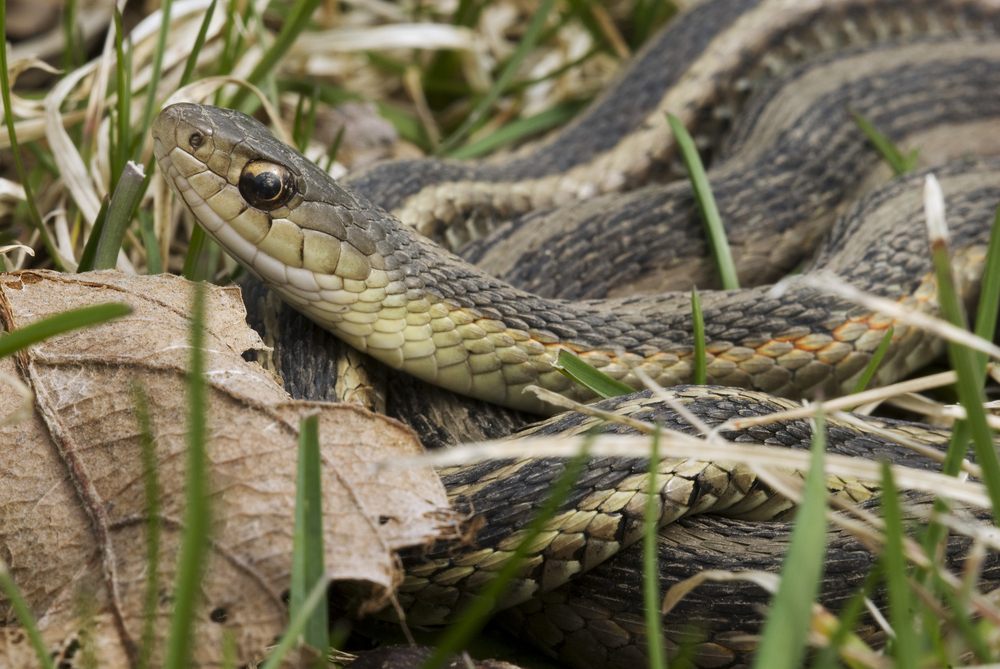
A close-up of a common garter snake, or Thamnophis sirtalis. (Photo: SDeming/shutterstock.com)
To find out, Brodie had to get a little uncomfortable. Brodie’s son and frequent research partner Edmund III describes his dad as “mildly ophidiophobic” and not pleased with the fact that he often found “big ugly” common garter snakes in his newt traps. The snakes (Thamnophis sirtalis) usually sprang from the buckets as Brodie approached and darted past him, but one day he caught one in the act of eating one of his newts and showing no ill effects.
Brodie started collecting garter snakes and subjecting them to the battery of TTX doses he’d given the other animals, and got much different results. The snakes resisted the toxic wallop. Some snakes, the younger Brodie says, were unaffected by TTX concentrations that were thousands of times higher than those that would harm people. They couldn’t even quantify the resistance of other snakes because they couldn’t get their hands on enough TTX to make an impact.
A predator with that kind of resistance to TTX would explain, and indeed select for, the evolution of the newt’s toxic overkill. Over the last few decades, the Brodies—the older focusing on the newts and the younger on the snakes—and a string of collaborators have documented the battle between the two animals. They’ve shown how the two species evolve in response to each other in a coevolutionary arms race.

The newt’s skin contains tetrodotoxin, which is lethal when ingested. (Photo: Peter Pearsall/USFWS - Pacific Region/CC BY 2.0)
The snake’s resistance to the poison drives increasing toxicity in the newts, and that new potency drives increased resistance in the snakes, which drives the newts to become even more toxic, which…you get the picture. The scientists have also uncovered the adaptations that allow the snakes to resist TTX and chow down on newts that can kill animals hundreds of times their size. To protect their babies from predators, newts even put TTX in their eggs.
With their latest discovery, they show that one of the arms used in the arms race predates the conflict—and even the creatures that are fighting it. The snakes can resist TTX because they’ve altered the shapes of their sodium channels, proteins that form pores on the surfaces of cells. This keeps the toxin from jamming the channels up and interfering with the cells’ functions. One channel-changing mutation is relatively new, and only found in some populations of garter snakes that eat the newts. Two others, though, are much older and more widespread. These altered channels provide some TTX resistance to all common garter snakes, evolutionary biologist Joel McGlothlin discovered, even those that have never been anywhere near a toxic newt.
To find out just when the snakes gained those resistance mutations, McGlothlin, the Brodies and their team recently sequenced the genes that encode the sodium channels in 78 snake species and a handful of other reptiles, figured out what kind of protection the different versions provide, and mapped them on the snakes’ evolutionary family tree. They found that a mutation that makes a channel on nerve cells resistant to tetrodotoxin was inherited by all snakes from their common ancestor.
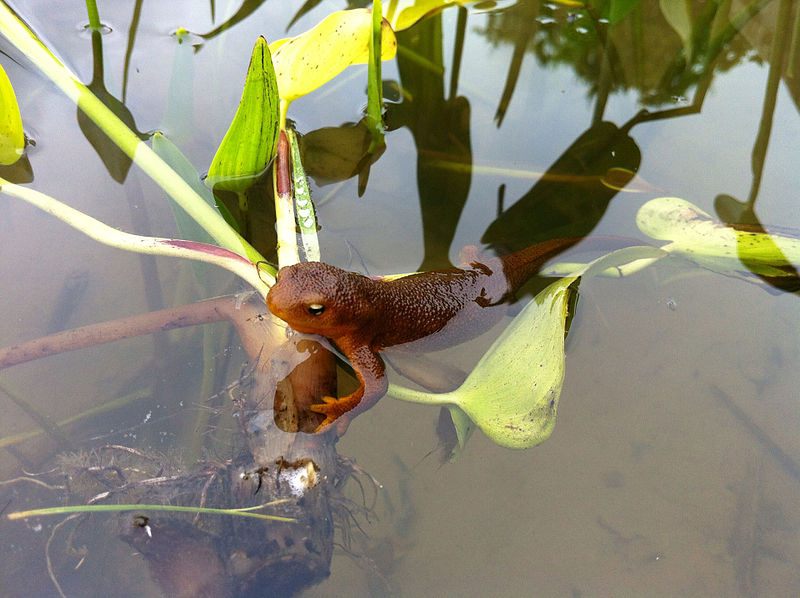
A rough-skinned newt peeking out of some water in Oregon. (Photo: Oregon Department of Fish & Wildlife/CC BY-SA 2.0)
They also found it in a lizard, suggesting that it originated in a common ancestor of snakes and lizards—likely for reasons having nothing to do with poisons—around 170 million years ago. That was well before the origin of either snakes or newts, which evolved around 140 million years ago and 50 million years ago, respectively. When snakes branched off from lizards, by happy accident they were partially resistant to TTX right from the get-go, prepared to eat toxic prey that had yet to evolve, and primed to develop stronger resistance.
The snake-newt arms race was set into motion before the two combatants even existed. From there, it was just a matter of a slightly toxic newt and a slightly resistant snake crossing paths a few million years later to really get the race ramped up. The original, ancient resistance mutation facilitated new ones. Resistance in a second nerve channel arose in a few snake lineages right around the time newts evolved. Later, more extreme resistance developed with changes to a channel found on muscle cells.
The whole situation—cartoonishly toxic newts that can ruin a hunting trip and snakes with a suite of resistance mutations—started millions of years ago with a mutation to a protein in the snakes’ ancient ancestor. It’s an example, the researchers say, of a historical quirk opening up novel evolutionary pathways. Which is only fitting, since a story about dead hunters and a boiled newt opened up the path to all these discoveries.

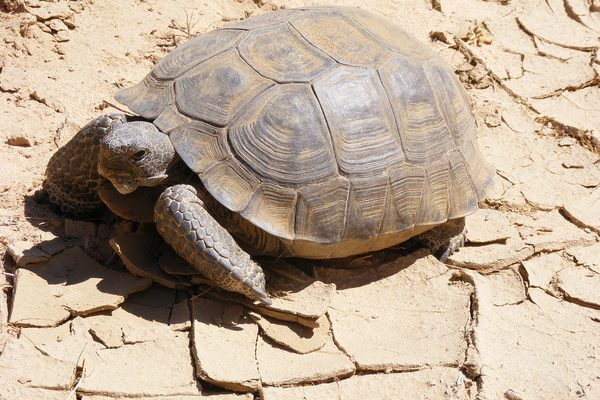















Follow us on Twitter to get the latest on the world's hidden wonders.
Like us on Facebook to get the latest on the world's hidden wonders.
Follow us on Twitter Like us on Facebook